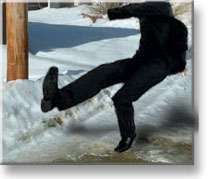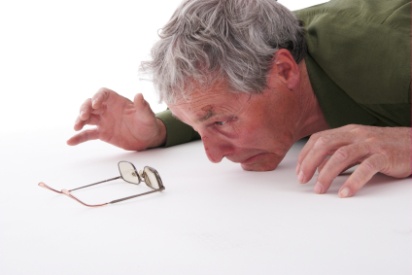 Outdoor surfaces, such as parking lots, sidewalks, and walkways, are one of the leading areas for slip and fall injuries. Snow, ice, and rain often make these areas slippery and dangerous. Winter conditions factor heavily into outdoor slip and fall injuries. Keep icy walkways clear.
Outdoor surfaces, such as parking lots, sidewalks, and walkways, are one of the leading areas for slip and fall injuries. Snow, ice, and rain often make these areas slippery and dangerous. Winter conditions factor heavily into outdoor slip and fall injuries. Keep icy walkways clear.
Tag: slip and fall
Home Safety: 5 Tips for Preventing Falls
 Falls are the No. 1 cause of home injuries and death in the U.S., according to the Home Safety Council. The two groups most at risk for falls are children younger than 5 and adults over the age of 70.
Falls are the No. 1 cause of home injuries and death in the U.S., according to the Home Safety Council. The two groups most at risk for falls are children younger than 5 and adults over the age of 70.
Try these strategies to prevent falls at home:
- Make the bathroom a no-slip zone. Install grab bars and non-slip mats or appliques in the tub or shower. Use a bathmat with a nonskid bottom and clean up any water that splashes on floors right away.
- Safety-proof stairs. Remove clutter from stairs and walkways. Stairs inside and out should have handrails, preferably on both sides. Have good lighting over stairs.
- For babies and toddlers, install hardware-mounted safety gates at the top and bottom of stairs. Pressure-mounted gates are less effective. Gates should have the JPMA (Juvenile Products Manufacturers Association) Certification Seal. Never use accordion-style gates.
- Put a guard on indoor lofts, landings, balconies, and stair banisters if your child can slip between the posts. Plexiglas is a good option because it bends, is easy to cut, and doesn’t shatter.
- Toss the throw rugs. Throw rugs are a big tripping hazard for young and old people. At the very least, tape or tack them to the floor.
- Leave a light on. Ideally, have night-lights in bedrooms, bathrooms, and halls.
- Make windows safe. New York City cut children’s deaths from window-related falls by a third after requiring window guards. Window screens are not strong enough to prevent falls. Install window guards with quick-release mechanisms (in case of fire) on upper floor windows. Keep furniture away from windows, especially in children’s room, and always watch children around windows.
